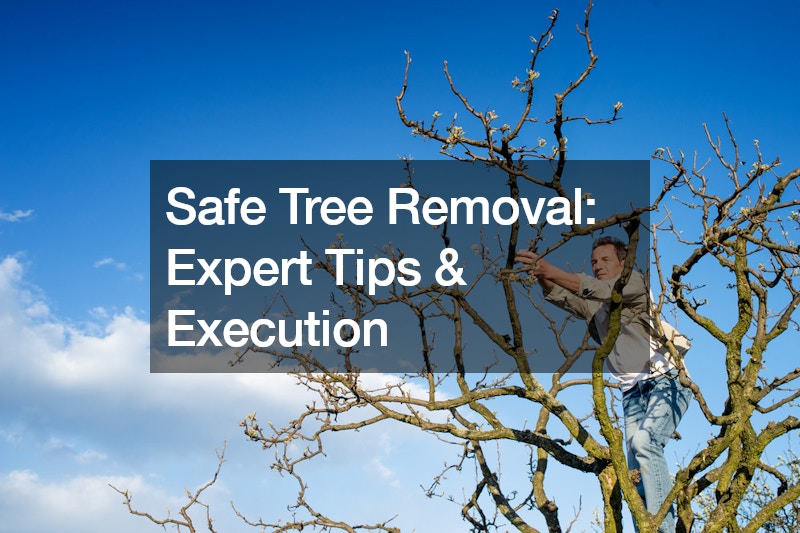When expecting a new addition to the family, the safety of your home environment becomes a top priority. One aspect that often gets overlooked is the condition of the trees surrounding your property. A large, leaning tree can pose significant risks, especially if it’s near the nursery or other living areas. Ensuring that potentially hazardous trees are properly assessed and safely removed is crucial for the safety of your family and home.
Assessing the Tree
The first step in addressing a potentially dangerous tree is a thorough assessment. Key indicators that a tree might need removal include:
- Leaning Towards the House: A significant lean, especially towards living spaces, is a red flag. This is often a sign that the tree’s root system or structural integrity is compromised.
- Improper Cuts and Rot: Trees that have undergone improper cuts may not heal correctly, leading to rot. Signs of rot include visible decay or hollow sections in the trunk, which weaken the tree and increase the risk of falling.
- Damaged Roots: Roots are vital for the tree’s stability and nutrient uptake. Damage from lawnmowers, construction, or natural wear and tear can lead to dying roots, compromising the tree’s structural integrity.
- Canopy Health: If 50% or more of the tree’s canopy is not leafed out, it indicates a severe health problem. The canopy is essential for the tree’s photosynthesis and overall vitality.
Planning the Removal
Once a tree is deemed hazardous, the next step is planning its removal. Tree removal, especially near a house, requires careful planning and the right equipment to ensure safety and efficiency.
- Safety Gear: Those performing the removal should wear appropriate safety gear, including hard hats, safety glasses, ear protection, protective chaps, and harnesses if using a bucket truck.
- Clearing Small Branches: The initial cuts should focus on removing smaller branches. This step helps clear the way for safer access to larger branches and the trunk.
- Tying Off Large Branches: To prevent large branches from falling unpredictably, they should be tied off and lowered gently. This controlled method reduces the risk of damage to property and ensures the safety of the workers.
The Cutting Process
The actual cutting process must be carried out methodically:
- Sectioning the Trunk: Once smaller branches are cleared, the trunk is cut into manageable sections. Typically, the upper trunk is cut into two to three-foot sections. As the cuts get closer to the ground, pieces can be cut into more useful sizes, such as 16 to 18 inches for firewood.
- Creating a Hinge Cut: For the final cut, an angled cut about 70 degrees is made, followed by a straight cut below it. This notch acts as a hinge, guiding the direction in which the tree will fall.
- Using a Winch: To ensure the tree falls away from the house, a winch can be attached to the trunk and secured to a nearby stable tree. This setup allows controlled pulling, directing the fall safely.
Final Steps and Cleanup
After the tree is safely on the ground, the cleanup process begins. Smaller branches are typically fed into a chipper, while larger sections can be cut into firewood. The remaining stump can be either ground down using a stump grinder or left to decay naturally, depending on the homeowner’s preference.
Preventative Measures
To avoid future hazards, regular tree inspections are recommended. Key factors to check include:
- Trunk and Root Health: Regularly inspect for wounds, rot, or damage to the trunk and roots.
- Canopy Density: Ensure the canopy is healthy and fully leafed out, indicating a vigorous tree.
- Professional Assessment: When in doubt, consult a local tree removal company for a thorough evaluation.
Closing Thoughts
By following these expert tips and ensuring proper execution, homeowners can create a safer environment for their families and protect their properties from potential tree hazards. Prioritizing tree health and safety is a crucial step in preparing your home for a new baby and ensuring peace of mind for years to come.
.


